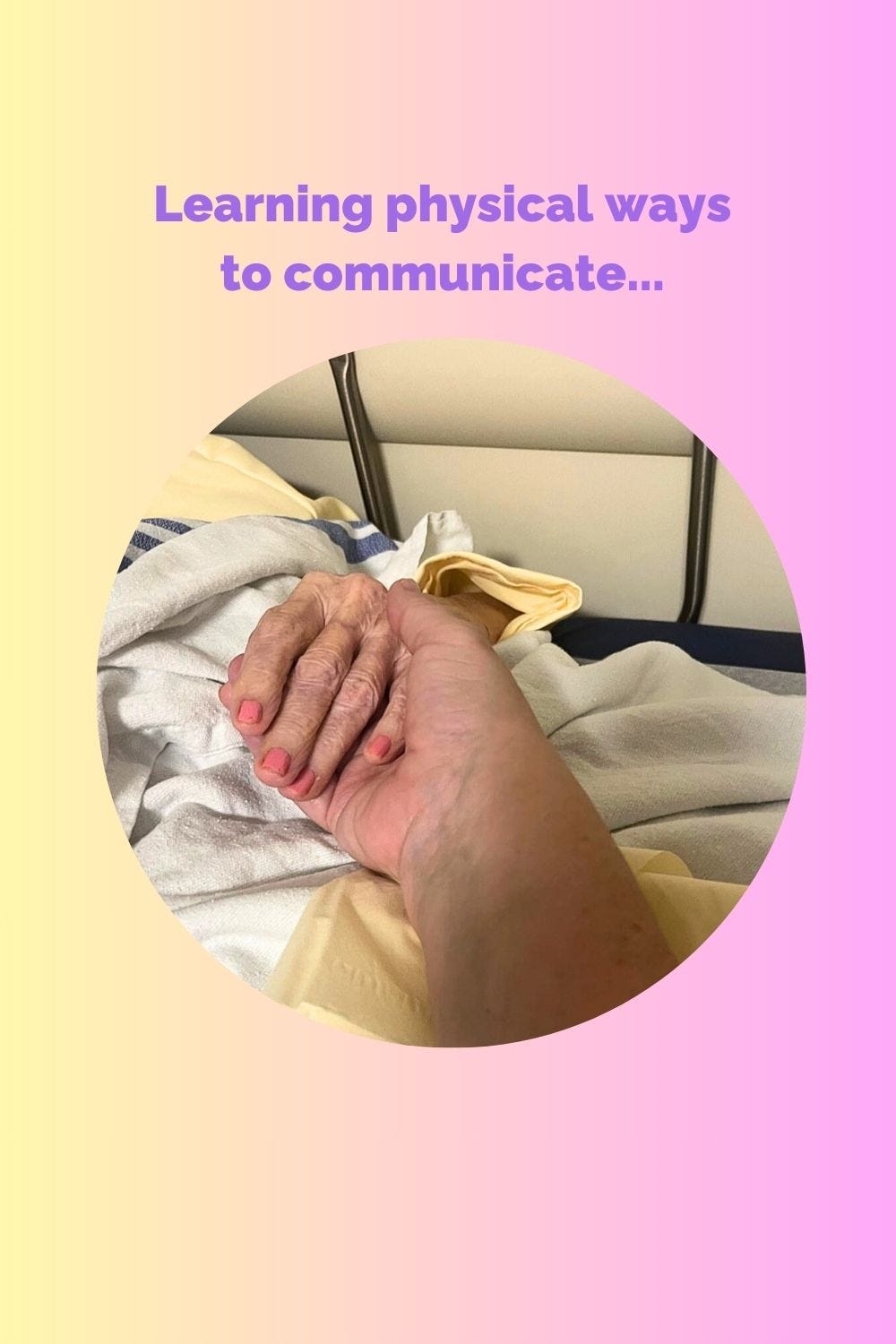Be UPLIFTed - learning physical ways to communicate - week 20
This week: communicating with our loved one who has dementia means changing our posture - our stance - our positions - and actions to make the most of our interactions. The "L" in UPLIFT is for learn!
One physical technique that works with little children and those with dementia is to meet them at eye level when you want to communicate.
My grandchildren and I communicate often in person and the best communication happens when I’m on their eye level. My husband has a better chance to do with because he can get on the floor with them.
I also watch these little ones play with their peers and see them trying to make eye contact to negotiate. If the littlest isn’t yet verbally fluent then body language is a big part of communication - they touch an arm, grab a hand, or give a pat on the shoulder to encourage. When they’re getting along well it’s a beautiful thing to see.
In fact, to communicate well, body language, eye contact, and facial expressions are important at every age and stage. Yes, including those who live with dementia.
Remember how you felt when your teens rolled their eyes at you? Or they wouldn’t look you in the eyes, or crossed their arms as you tried to make an impact with what you were saying? Yeah. Not so good. It felt dismissive and disrespectful.
Can you imagine how your loved one with dementia feels when they’re met with a frown and lots of loud words (that are too quick to comprehend), when they’re tugged one way or another, or if they’re rushed or literally talked “down” to because they’re sitting and you’re not? Yeah. Not good.
3 physical actions to help communication.
These three actions are if we’re with our senior person in their space.
1. Meet at their eye level.
If your loved one living with dementia is sitting or lying down, meet them at their physical level so you can be equal in eye contact. Nobody likes to be stood over and talked at…
It’s really simple - but it takes an extra moment or two to figure out how to manage. We can do this!
2. Gently touch them.
Reach out to shake their hand - it’s an automatic response to reciprocate this gesture - then shift your hand into Teepa Snow’s “hand under hand” method.
Holding my mom’s hand is one of the most emotional actions I can have when we are together. She feels my gentle touch, and then looks into my face and can read my expression of love, even if she can’t hear or understand what I’m saying. I’m expressing love through touch.
One person in an online forum on Facebook talked about massaging her mother with a sweet-smelling lotion. Her mom was in the later stages of dementia - bedbound and non-verbal. That touch became a bond of communication that remained.
3. Use your actions to give cues.
Teepa Snow has wonderful videos to demonstrate these actions that will give a cue to seniors living with dementia what we are trying to communicate - whether it’s wanting them to get dressed, get up from the table, sit down, and more.
I’m in awe of how simple she makes it seem with just a few actions as a cue. The videos below are not meant to be “training”, but rather just an introduction - there are full-length DVDs or online streaming training.
Here are a few ideas:
Positive Action Starter - this is Teepa Snow in action with a senior, getting them going… meeting him at eye level, using physical cues to make him comfortable, and more. I love this video!
Get their visual attention to what you’re trying to communicate. Here’s another video with Teepa educating a group on ways to better communicate with cues for seniors with dementia.
When dexterity becomes a challenge and you want to help. Teepa demonstrates the idea of giving cues using her “hand under hand” technique to help someone brush their teeth.
Learning physical techniques to communicate.
We need to continue to learn more as things change for our senior person.
And it’s best if we reach out to professionals with practical ideas to help us. This is especially true if you’re the main care provider in the same space as your senior person living with dementia.
But you can do it! It’s possible!



